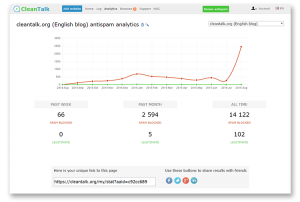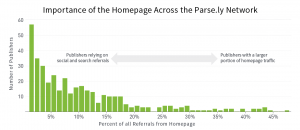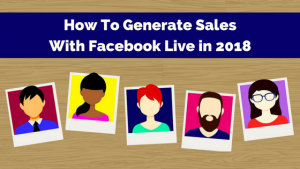Like anything worth doing, it pays to have a PLAN for your content marketing before you start creating content — and a blog content calendar for your business can be exactly that plan, a roadmap to help you create content that actually helps move you toward your business goals.
What is a blog content calendar?
Let’s start at the very beginning. It’s a very good place to start.
A blog content calendar is exactly what it says on the tin: a calendar that helps you see and plan exactly what content you will create for your blog (or podcast, or YouTube channel, or email list…) over a period of time.
Now, if that’s all it is, you can use any old calendar. Use your Google calendar. Use the free calendar you get from the bank every December. Use the funny calendar your sister sends you with the pictures of your nieces and nephews on it.
But what most people are actually looking for when they’re looking for a blog content calendar is a template that will help them understand what information they should be thinking about when planning their content. (And if it helps them come up with ideas as well, so much the better!)
What information should be included in a blog content calendar?
So let’s talk about what information should be included in your blog content — other than the blog topic.
As a matter of fact, I think the actual topic is the last thing you fill in when working on planning your content.
Let me explain:
When I’m putting together a content calendar for a client, I think about the 5 Ws — who, what, when, where, why (and sometimes how).
You probably learned the 5 Ws way back in elementary school when your teachers were teaching you how to research a question or write an essay, and they’re journalism 101 for anyone investigating a story or writing a news article.
But we apply them a little bit differently when putting together a content calendar — and I like to go in a slightly different order.
Start with why
In my 1:1 strategy sessions with clients, we always start with why. I want to know what their big goals are for the business as a whole, which helps me to understand why we want to write any given piece of content at any given time.
So what’s your big “why” for your business right now? For example:
- Do you want to sell a particular course or service? How many units? How much revenue do you want to make?
- Once you know that number, how many people do you need in your audience to make that number of sales? (Hint: for a good ballpark number, multiply the number of sales you want to make by 100. That’s how many people need to see the offer.)
- Now that you know how many people you need in your audience, do you need to grow your audience and reach new people before making the offer?
And so on.
Do you see how starting with the business goal informs what our marketing strategy will be? In this example, if, we figure out that we need to grow your audience by 500 people before we launch the next offer, we can ask ourselves, what’s the best way to reach 500 new people with content and get them to opt in?
The answer will be different for everybody! But it gives you a good place to start.
Work backwards from when
Next, we ask ourselves, “When will I be posting this content?” That’s the function of a calendar, after all!
I recommend plugging in your business deadlines and milestones to your calendar first, as well as any major holidays or moments in the cultural zeitgeist (like summer break, back to school, etc.). Then we can see exactly what we should be talking about when.
Using our example from above, if we know that our big why is to launch a new course in September, and we need to attract 500 new people before the launch in order to make our sales goals, then we can see on our calendar that we probably need to spend July and August creating content that will attract those new people — long before we actually start offering the new course. (Depending on your customer, your offer, and your price point, it can take weeks to attract and then nurture new people so that they’re ready to buy.)
This is also why I like using a spreadsheet for my blog content calendar — because I can see a large swath of the year at a glance. But the best tool is the one you will use, so if you like a different type of calendar, you do you, boo.
Think about who you want to attract
The “who” part of the calendar is easy to overlook, but it’s an important step.
You need to consider who you’re writing to in order to create the kind of content that will attract those people.
Sounds basic, but I myself have fallen into the trap of attracting the wrong person…
Around 2016, I spent the entire year creating content upgrades — small, unique lead magnets that go with every blog post — to build my list. And it worked. BOY, did it work! I was able to triple the size of my email list in less than 6 months.
The kinds of content upgrades I was creating were mostly templates, worksheets, and resources for the DIY blogger — which was fine when I wanted to sell DIY courses. But when I pivoted my business to focus on selling our 1:1 services… Well. I surveyed my audience and found out that only about 1% of that hard-won email list was interested in buying what I wanted to sell.
*whomp whomp*
The point is, be very clear on who you want to attract with your content and then make sure that the content you’re creating actually attracts that kind of person!
Finally! We can talk about what to write
Now, finally, it’s time to talk about the What! As in, “what the flying zucchini am I going to write about???”
But here’s the beauty of this system: when you’ve answered the other questions up front, it should be much easier to decide what specific topics you want to write about.
Going back to our example, if we know we need to attract 500 new people to our email list in order to meet sales goals, then we also know that we need to create the kind of content that will attract those new people, right? Around here, we call that Attention content, the kind of content that grabs attention. A lot of times, Attention content busts a myth, surprises people, or offers a valuable, juicy resource that gets them a small win right away.
Once again, there are myriad ways to accomplish this: You might create a new lead magnet, write an “ultimate guide” type article, run ads to attract new visitors, offer a webinar or a free challenge people need to opt-in to, create a pop-up Facebook group or podcast to attract attention, or partner up with other business owners who already reach the audience you want to attract.
But by knowing why we’re creating the content, who we’re trying to attract, and when it all needs to happen, the what gets a lot easier.
Don’t forget to think about where you will promote!
There’s one more W we haven’t talked about yet, and that’s “where.”
Think about where you will post, promote, and share your content.
One big mistake I often see business owners make is that they are creating great content — but then they’re not doing anything with it.
Sure, they post it to their website, share it on their social media channels, and maybe email it out to their list, but that’s just preaching to the choir. That’s (mostly) only reaching people who already know about them.
In our example for this article, we need to attract 500 new people to the email list in order to make our sales goals, and just posting content to our existing audience won’t get us there.
So this is where we have to get creative and ask, where can I share and promote this that will help me reach new audiences?
There are two basic choices here: paid advertising or organic promotions.
Advertising costs money; organic promotions cost time. You have to decide which you have more of right now. (Or do a combination of the two!)
Either way, you have to have a plan for how to promote the content you create so that it doesn’t go to waste — and so making sure you’re considering the “where” when you’re putting together your blog content calendar is a vital step.
How about the how?
Our sixth W is how, as in, how are you going to make all this happen?
Creating the plan is just part of it; you also have to consider the execution.
Depending on what stage of business you’re at, you’ll have different options.
If you’re just starting out, you’ll likely have to do most of your marketing on your own. That’s OK! It’s totally doable. But you need to be sure you give yourself enough time to accomplish your goals.
No matter where you’re at, it all starts with a plan, and the best way to visualize that plan is with a blog content calendar.
Digital & Social Articles on Business 2 Community
(25)
Report Post






